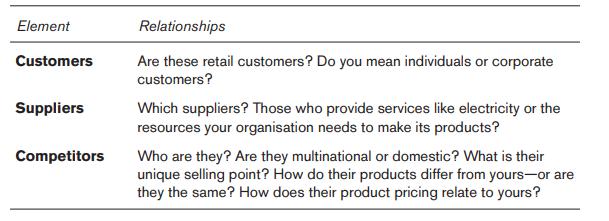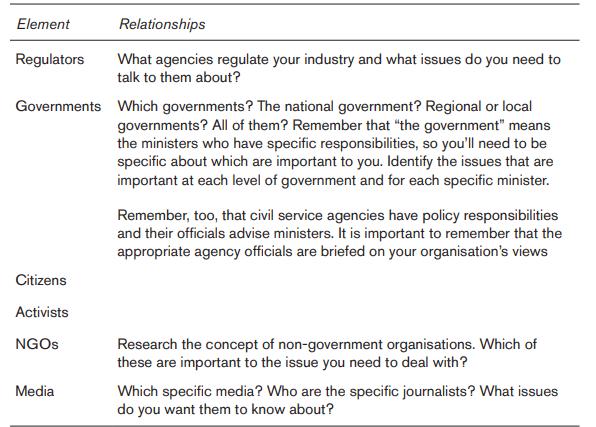An organizations non-market environment comprises all the relationships it has beyond the market but which nevertheless affect
Question:
An organization’s non-market environment comprises all the relationships it has beyond the market but which nevertheless affect its ability to reach its objectives. Issues in this environment are about are social, political and economic matters. For this exercise, use the topic you selected for your strategic plan project when you read Chapter 1. To develop that strategic plan, you’ll need to identify and analyze issues that are important to your organization before you work out goals, objectives and the other elements of the strategy. To start that process, and to help identify specific issues, it will be useful to set up a framework for your organization’s market and non-market environments. This exercise is designed to help you do that. Use the format shown in Tables 2.1 and 2.2 to set up two Word tables: one for your organization’s market environment and one for its non-market environment. In each table, include a row for each of the elements of the environment, as in the examples. Some pointers for doing this are included in the table. In the relationship's column of your table, list who the relationships are with, and what political, economic or social issues are associated with the relationships. Relationships could be with specific stakeholders. For example, in the non-market table, you will need to identify specific media that are appropriate to your organization, along with governments, regulators, groups of citizens and so on. In other words, unless your organization is involved in sports, it is highly unlikely that sports journalists would be interested in it. Be precise in identifying the relationships and issues. “The media” is not an appropriate relationship because it is not clear enough; “business journalists” is appropriate if your organization is a commercial business. These are important tables because you will use them in Chapter 5 to help you analyze your organization’s communication needs, and in Chapter 6 to identify specific target publics by refining broad stakeholder groups. As you compile the two tables, ask yourself:
Table 2.1

Table 2.2

1. Who is important to the organization in this context?
2. Why are they important?
3. What issues are they interested in, and why?
Step by Step Answer:






